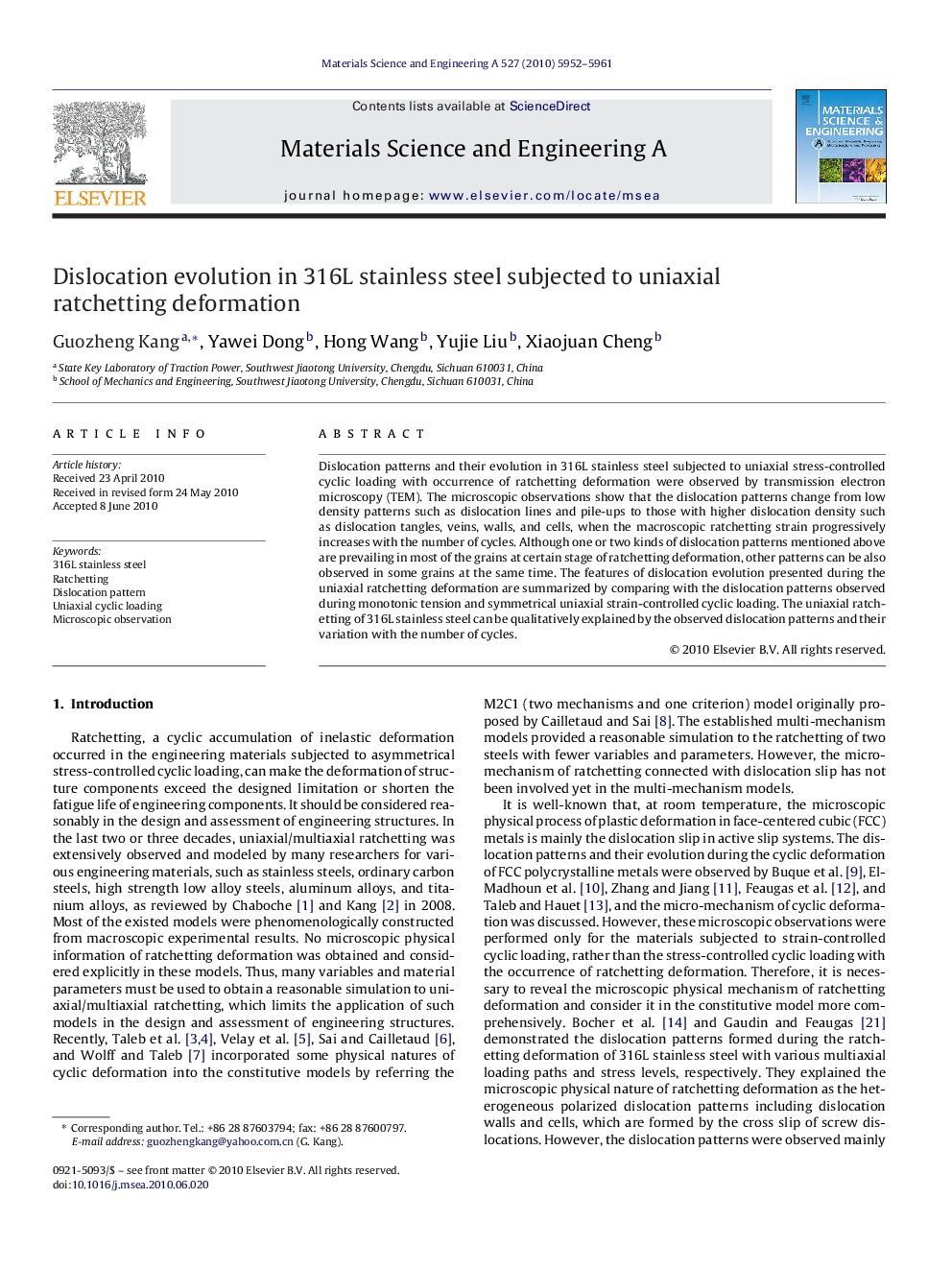| Article ID | Journal | Published Year | Pages | File Type |
|---|---|---|---|---|
| 1579365 | Materials Science and Engineering: A | 2010 | 10 Pages |
Dislocation patterns and their evolution in 316L stainless steel subjected to uniaxial stress-controlled cyclic loading with occurrence of ratchetting deformation were observed by transmission electron microscopy (TEM). The microscopic observations show that the dislocation patterns change from low density patterns such as dislocation lines and pile-ups to those with higher dislocation density such as dislocation tangles, veins, walls, and cells, when the macroscopic ratchetting strain progressively increases with the number of cycles. Although one or two kinds of dislocation patterns mentioned above are prevailing in most of the grains at certain stage of ratchetting deformation, other patterns can be also observed in some grains at the same time. The features of dislocation evolution presented during the uniaxial ratchetting deformation are summarized by comparing with the dislocation patterns observed during monotonic tension and symmetrical uniaxial strain-controlled cyclic loading. The uniaxial ratchetting of 316L stainless steel can be qualitatively explained by the observed dislocation patterns and their variation with the number of cycles.
